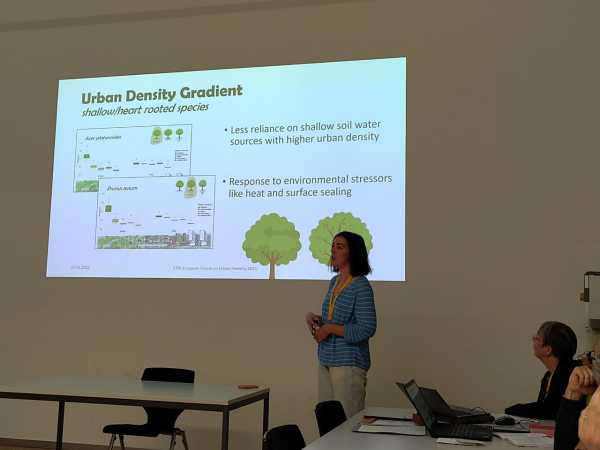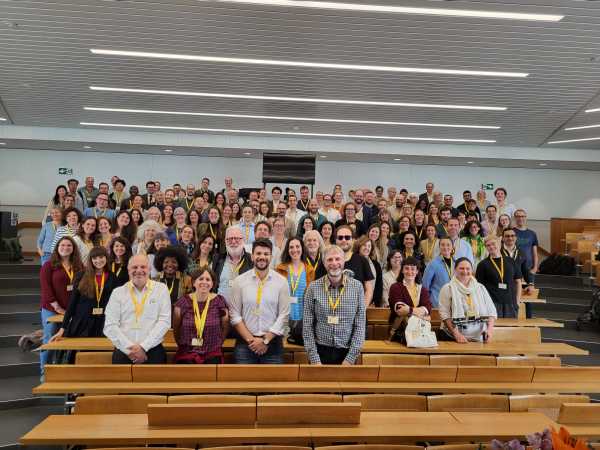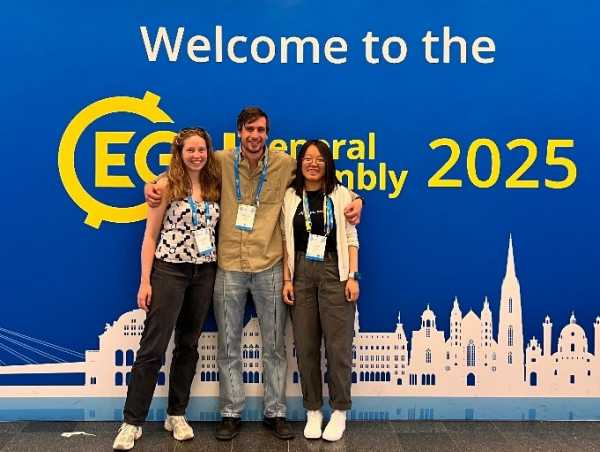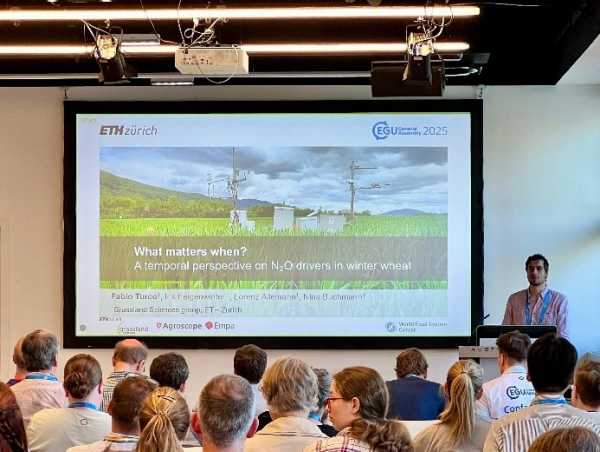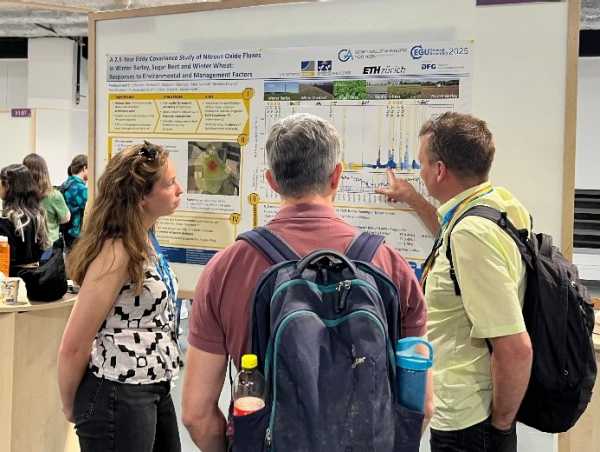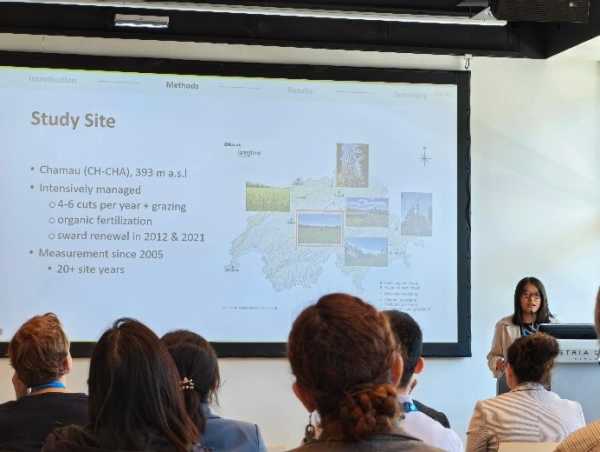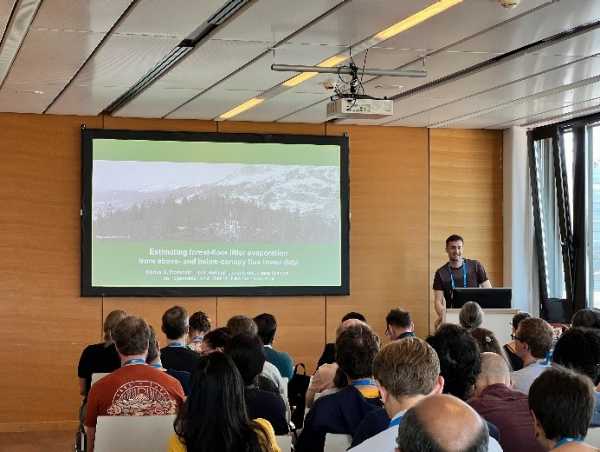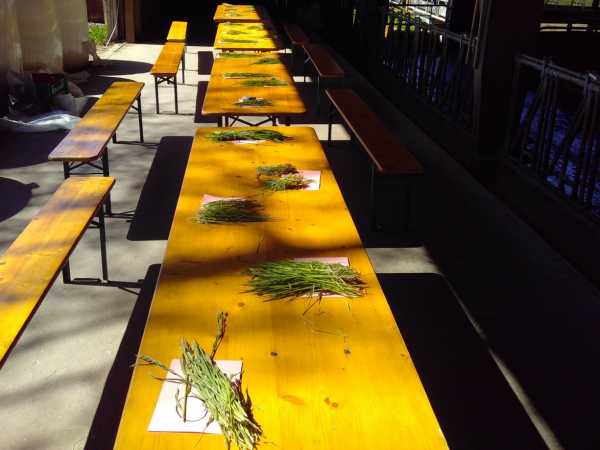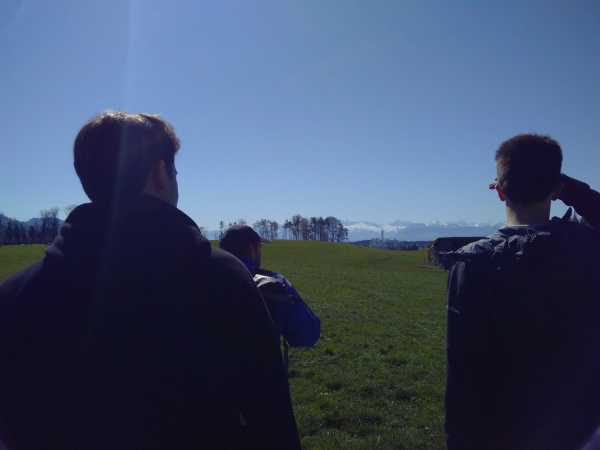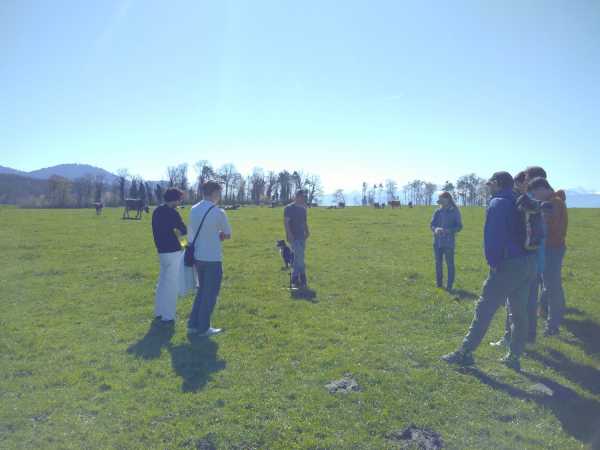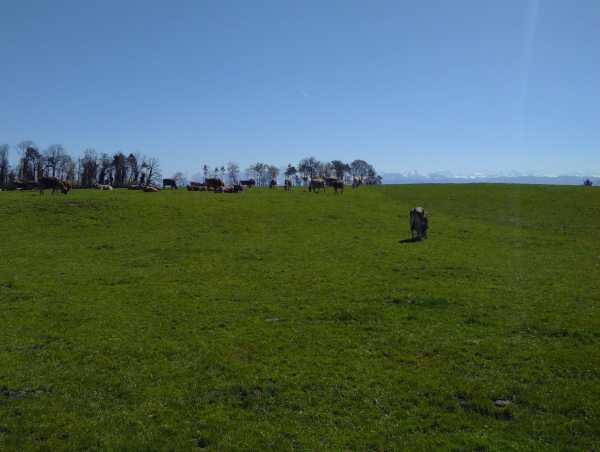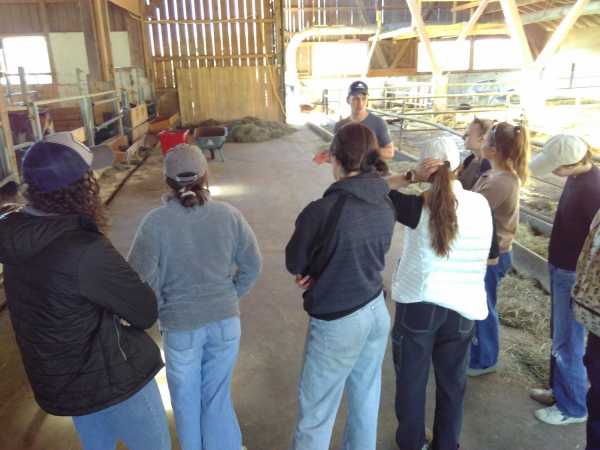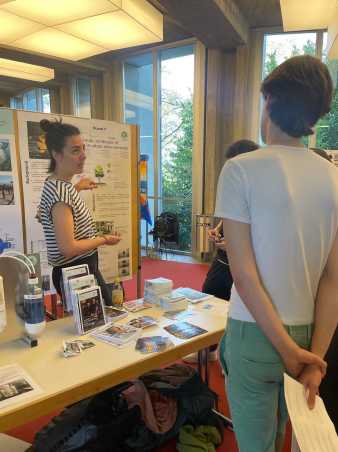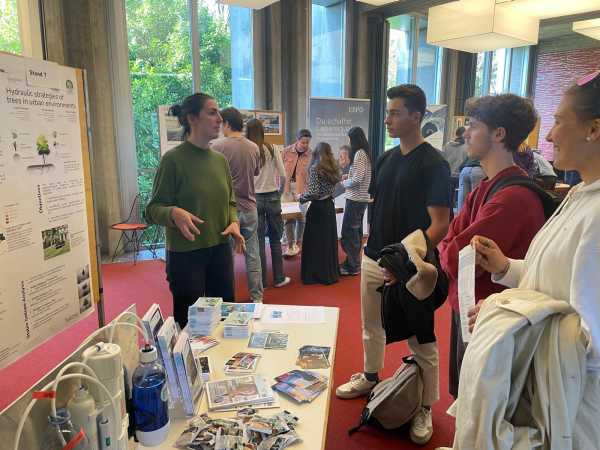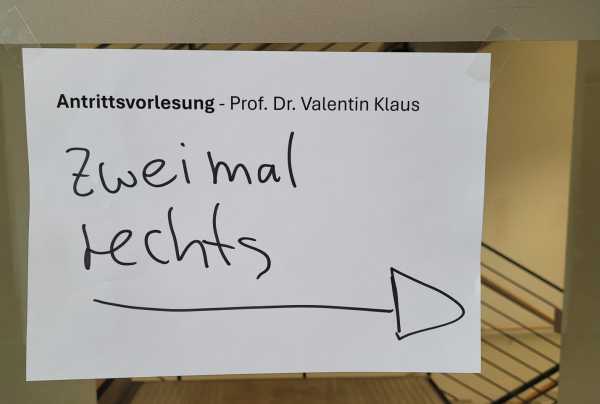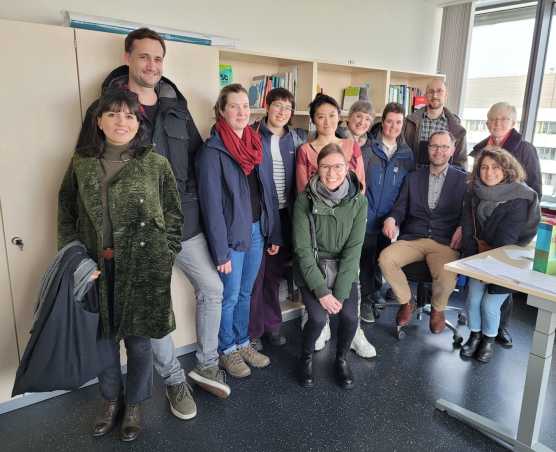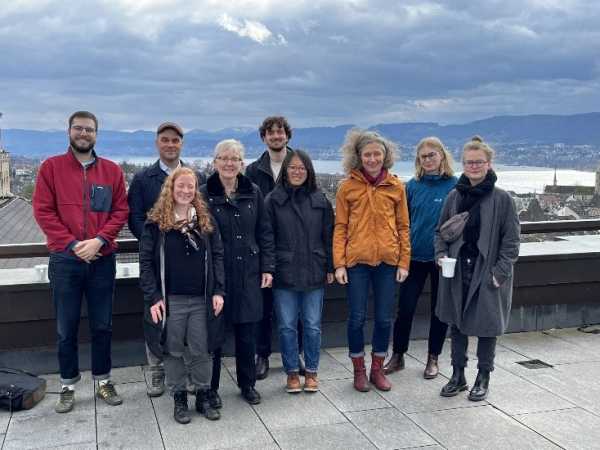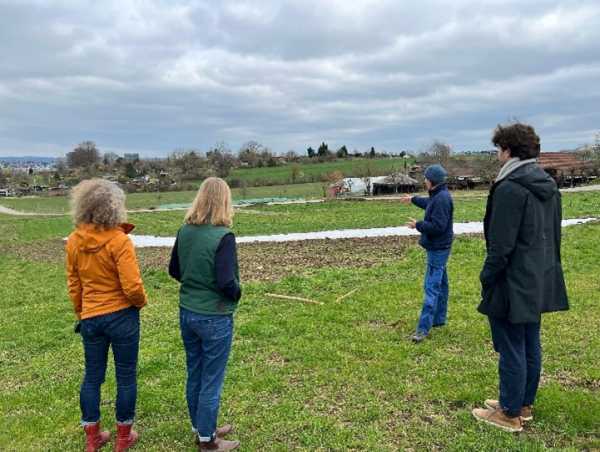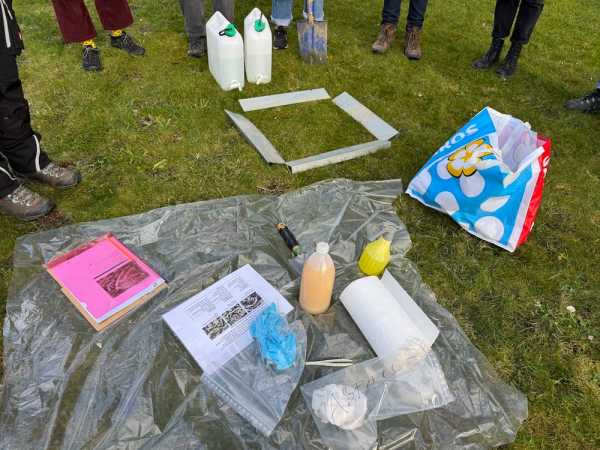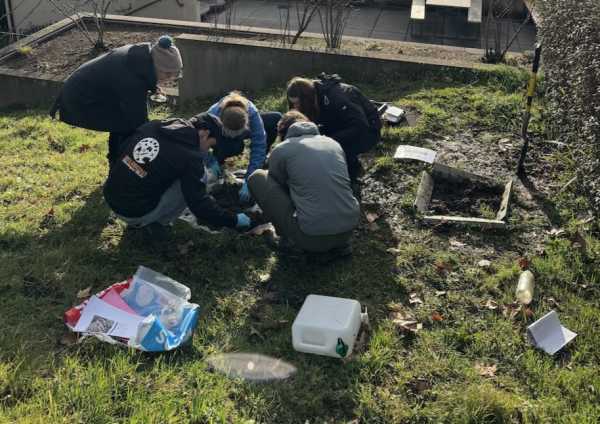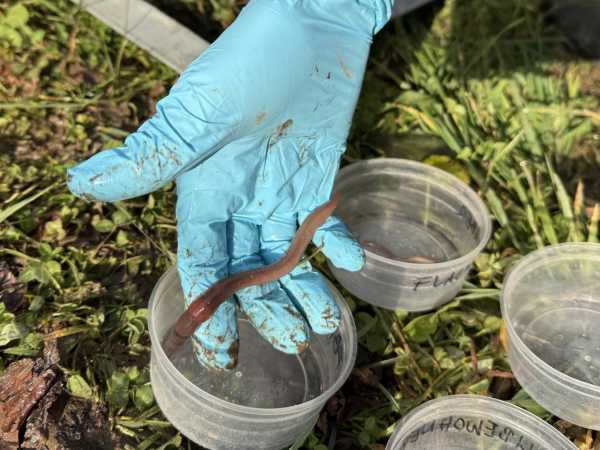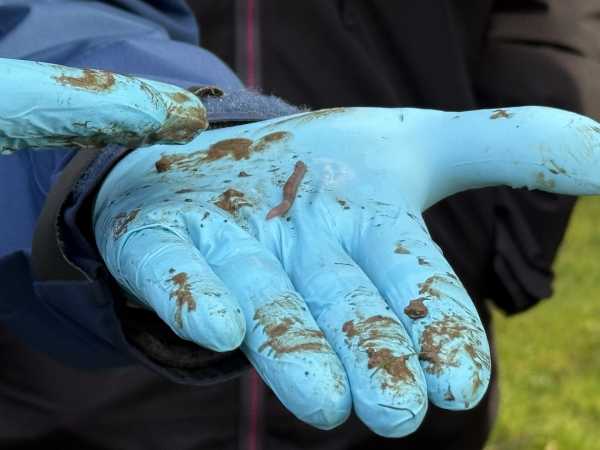News
Find all our news from previous years in our News Archive.
Are you interested to work with us? Check out our open positions.
July
During her visit to the Expo Garden of Northwest Agriculture and Forestry University (NWAFU) in Yangling (China), Nina Buchmann gave a short statement on CCTV. Check out external page what she said about the exhibition (it starts around 4:08). (31 July 2025)
Teaching about agroecology has brought Nina Buchmann to TV: In its Friday series «The idea», the SRF news format 10 vor 10 aired a report on the “external page Hoflabor”. Their regenerative mosaic farming approaches to preserve soils and foster species diversity have also been used as real-world examples in our Agroecology course. Hence, 10 vor 10 visited one of our seminars and interviewed Nina on her opinion about the methods used at “Hoflabor”. Check out external page what she said (in German). (25 July 2025)

Once again this year, a Grassies team successfully participated in the external page Bike-to-Work Challenge, which took place in May and June. With almost 1'200 kilometers of cycling and 97 cycling days, they reportedly saved 172 kg of CO2. Well done - and, what is most important about this: It was fun! (10 July 2025)
June
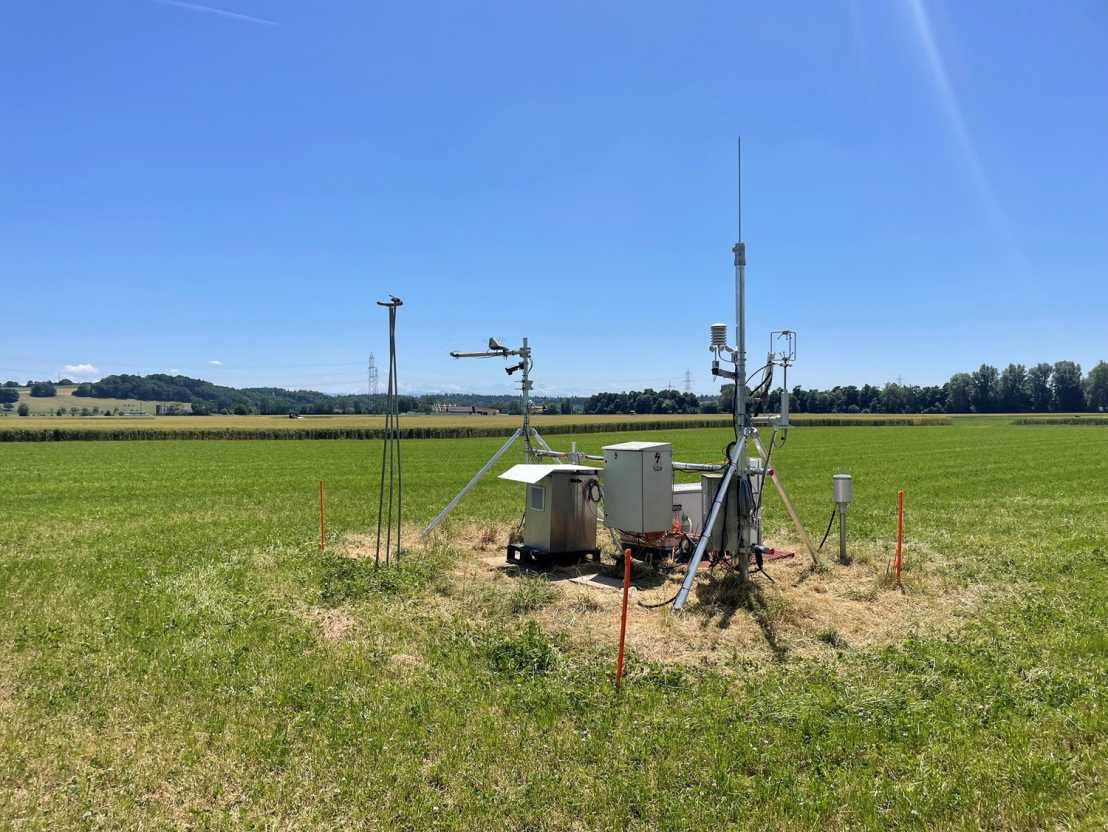
Complete makeover for measurement station in Oensingen. Our technicians and the new SRP Flavian Tschurr spent, in total, two days in the field to renew the entire station setup. All instruments and sensors were disconnected, and the masts and beams dismantled. Afterwards, everything was newly installed and fixed. At the same time, the N2O laser - that had measured in Tänikon until recently - was brought back to Oensingen. We are looking forward to new N2O measurements from our cropland site (that is currently a grassland). Great job, techs & Co.! (24 June 2025)
A warm welcome to our IAESTE intern Hugo de Sousa Côrtes. Hugo will mainly be working in the DONA project, helping Lorenz Allemann with his measurements. (17 June 2025)
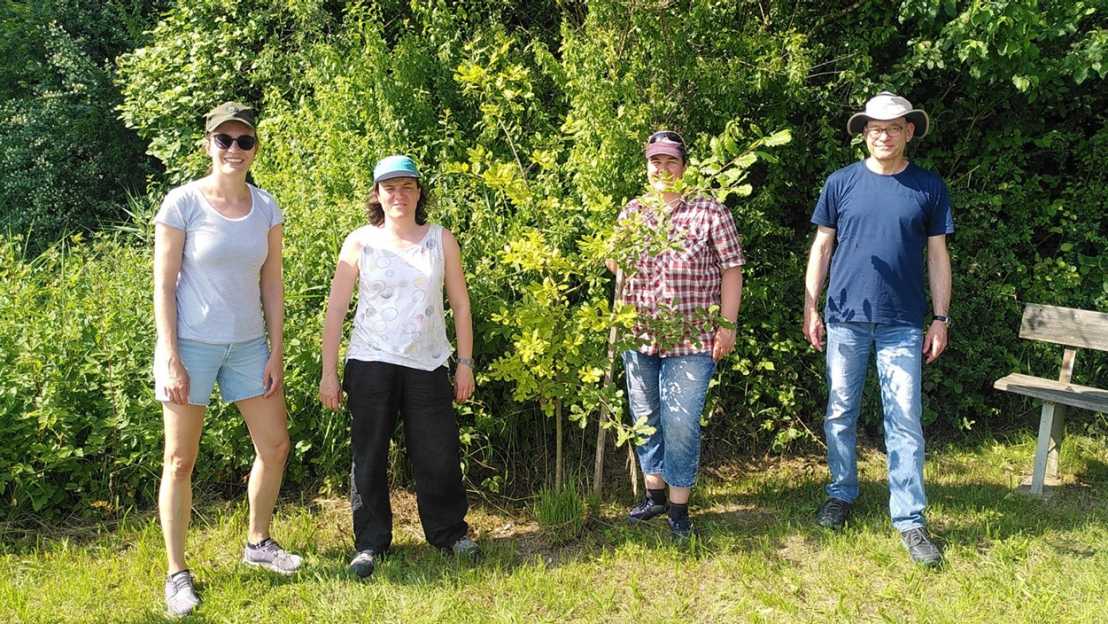
Three years ago, our colleague Werner Eugster passed away. As we do every year, some group members visited the oak tree that was planted in Werner's honor at his memorial service during a memorial walk. The oak tree already towered over all the walkers and is now approximately 2 meters tall. (11 June 2025)
The external page NextGenCarbon consortium met three days in Paris for our Annual meeting. All work packages presented their planned and on-going activities, Flavian Tschurr presented our plans for “isoscapes” across the footprints of eddy-covariance towers. Lots of new opportunities arose. (10-12 June 2025)
Our doctoral student Sophie Emberger attended the European Forum on Urban Forestry (external page EFUF2025), hosted in Zurich this year. The conference brought together researchers, city officials, and NGOs working in the field of urban forestry, allowing a diverse exchange of perspectives on the future of urban green spaces. Hence, a particular highlight of EFUF2025 was its intersectional approach: Keynotes and discussions spanned topics from forest management, public health, environmental justice, and gendered safety perceptions. Sophie gave a talk about her research on hydraulic strategies of urban trees as part of the UrbaNature project. In between sessions and excursions through her hometown’s green spaces, she had the chance to connect with fellow urban forestry enthusiasts and exchange ideas. A big thank you to the EFUF community for the inspiring conversations and great energy! (3-6 June 2025)
For the second time, the Agricultural Sciences took part in the ETH wide Study Week - as one of the seven study programs which were presented. High school students were able to experience the diversity of the Agricultural Sciences program at ETH Zurich in various workshops. Sabina Keller, who was also responsible for the program entitled "Wie werden wir alle satt? - Forschung für eine nachhaltige Landwirtschaft" (How can we feed everybody? - Research for a sustainable agriculture), led a workshop on the impacts of extreme weather events on grasslands. (2-6 June 2025)
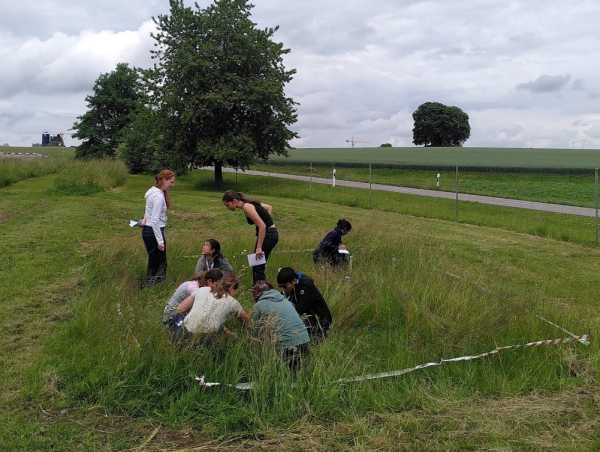 Soil sciences workshop with Prof. Frossard
Soil sciences workshop with Prof. Frossard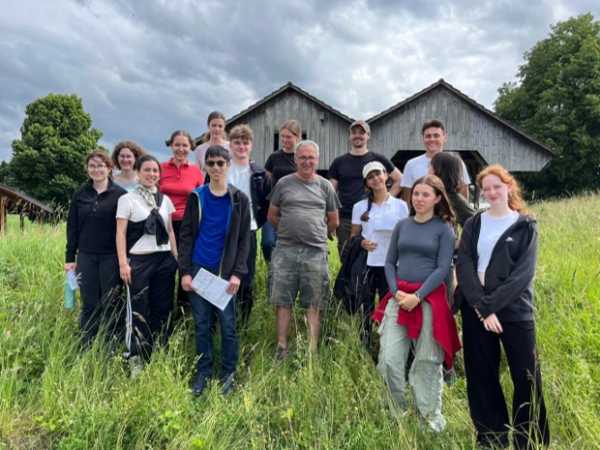 In the teaching greenhouse of the Sustainable Agroecosystems group
In the teaching greenhouse of the Sustainable Agroecosystems group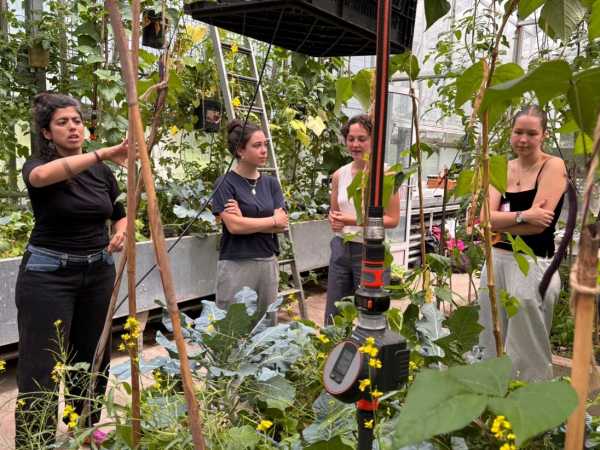 At the AgroVet-Strickhof site Früebüel
At the AgroVet-Strickhof site Früebüel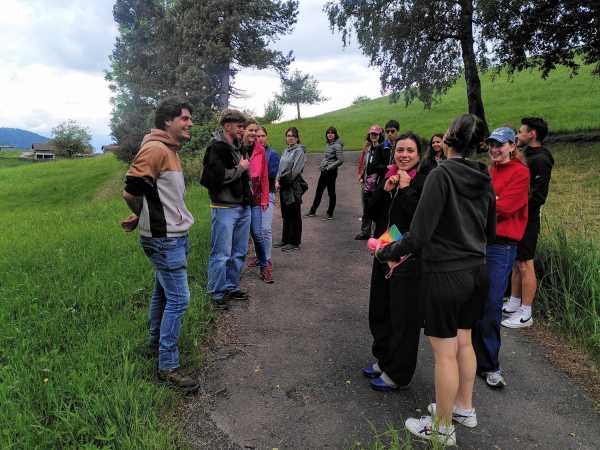 During the genome editing workshop
During the genome editing workshop During the week, the students presented their results to each other
During the week, the students presented their results to each other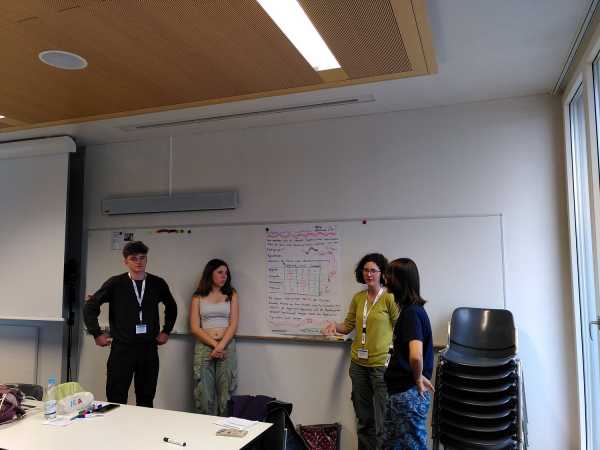 The final presentations were also attended by the Rector
The final presentations were also attended by the Rector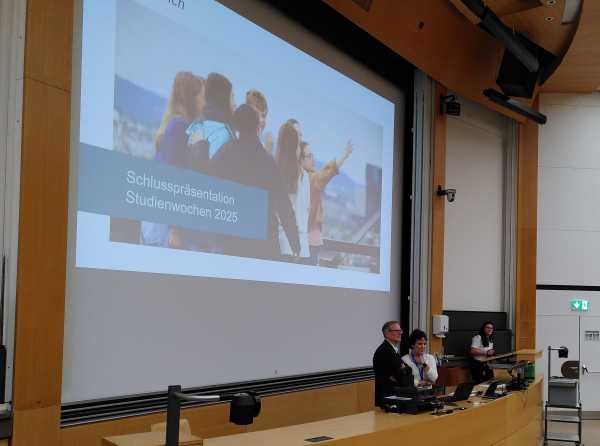
What is the status of the Swiss carbon cycle? This was the topic of a symposium bringing together scientists from many disciplines across Switzerland. Nina Buchmann was invited to present our group’s research in her talk entitled “Swiss FluxNet: Long-term measurements of CO2 fluxes and carbon budgets for climate-smart management of Swiss forests and agroecosystems”. Check out the program and many impressions. (2 June 2025)
May
The WaldLab Forest Experimental Site at Hönggerberg is celebrating its fifth anniversary and its head Marius Floriancic is right in the middle of it. In an ETH News article published on the occation of the anniversary, Marius' work at the Waldlabor is showcased. In the past five years, a multitude of measurements - many of them continuously - have been set up to study water fluxes of the forest. Results from this unique experiment are exciting. For example, measurements of Marius and his team show that most of the stored water is older than three weeks, confirming the "old water paradox". This is just one of many findings - and more are to come. Check out the full ETH news article. (26 May 2025)
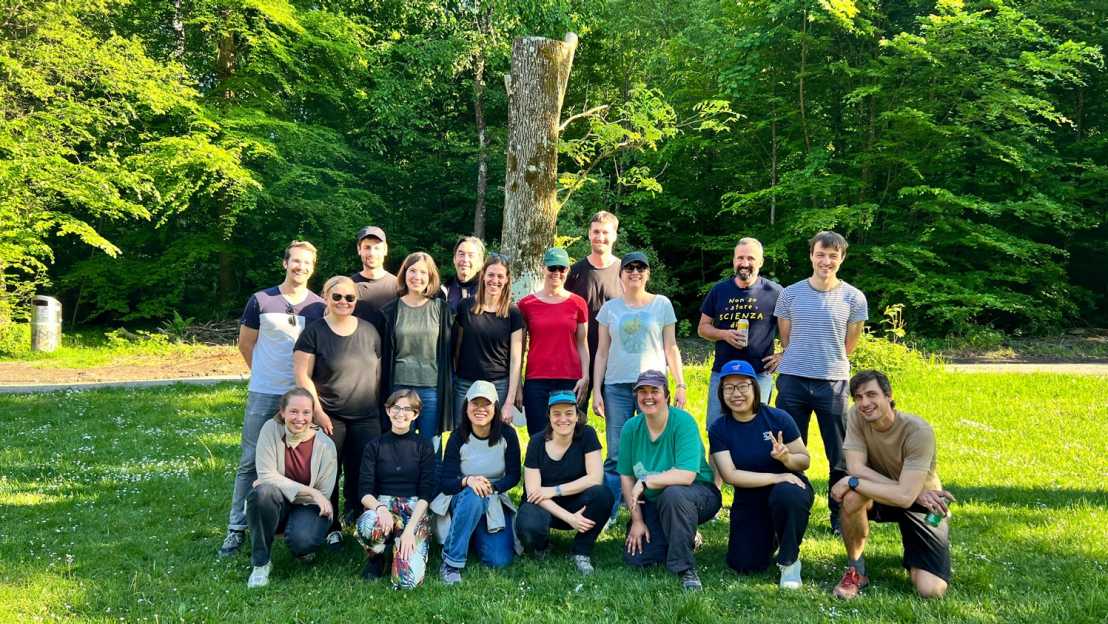
The spring event brought many group members out of the office and into the forest. Lorenz Allemann and Fabio Turco organized a scavenger hunt for us. On three different routes, we made our way through Zürichberg forest. To get the right directions to the barbecue spot, we had to answer questions correctly. Not always so easy - but we all made it. At Waldhüsli, we lit a fire to prepare our dinner, enjoyed the chats with colleagues, and played Kubb. It was a lot of fun. Thank you for the great organization, Lorenz and Fabio! (14 May 2025)
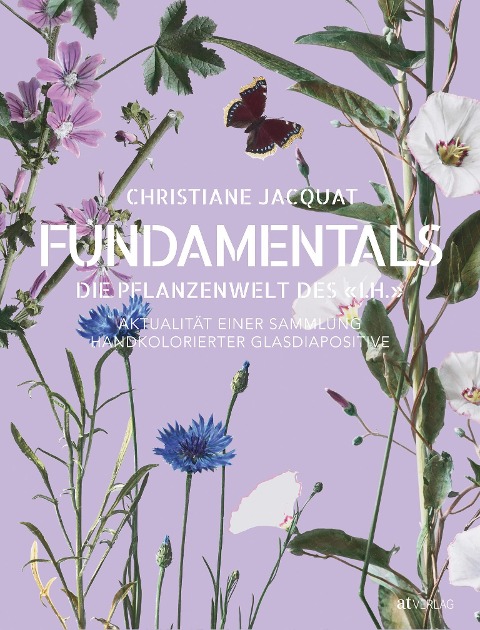
Very nice recognitions for the Fundamentals book on Hanel's hand-colored glass slides. Christiane Jacquat's book including our glass slides was awarded the external page third place in the category "Illustrated book" of the German Garden Book Award, and it was also listed among the external page Top 5 garden books of 2025 by the Deutsche Gartenbau-Gesellschaft. What a great boost of visibilty! (13 May 2025)
In an interview with the ETH Library, Sabina Keller and Lukas Hörtnagl talk about how they share data stewardship in our group. While Sabina acts as data archive manager and makes sure the data comply to external page FAIR standards, , data scientist Lukas takes care of the quality control, processing, and organisation of data. This shared responsibilty ideally supports our group’s efforts to best research data management practices and sharing data openly. Check out the full interview for more information. (9 May 2025)
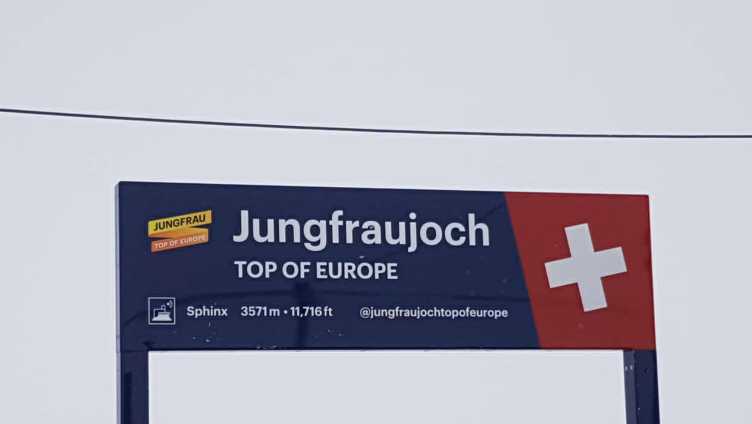
After the ICOS-CH visit to Jungfraujoch earlier this year, also the non-ICOS members of our group got the opportunity to visit the external page High Altitude Research Station Jungfraujoch. external page Federico Bianchi, who is doing research in the Sphinx observatory, organized a guided tour for us. Once we arrived up at 3'454 m asl, we first got a warm welcome by the custodians of the research station who showed us the facilities and told us about their daily tasks. We learned about the special challenges to ensure supply of consumables at such a remote location, and were surprised to see how the station was embedded into the rock. Later, Fede showed us around the lab facilities and also explained his research. Thanks a lot for making this visit possible, Fede, and a special thanks to Kukkis for organizing the logistics around it! (7 May 2025)
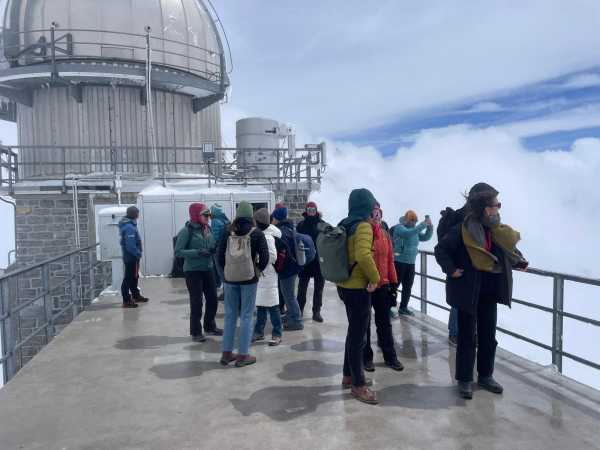 The clouds moved up for a few moments so that the Aletsch Glacier came into view.
The clouds moved up for a few moments so that the Aletsch Glacier came into view.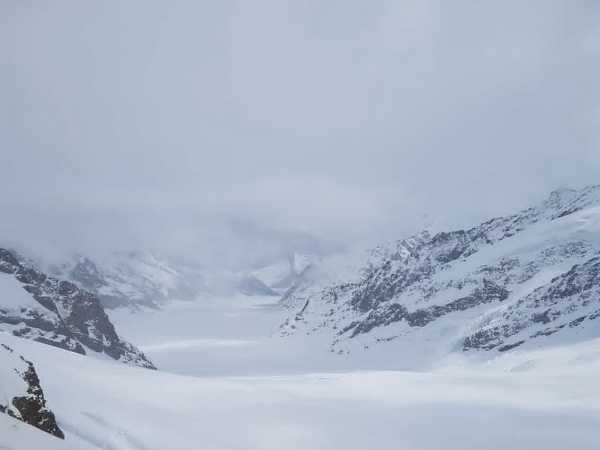 The Alpine Choughs enjoyed the windy weather.
The Alpine Choughs enjoyed the windy weather.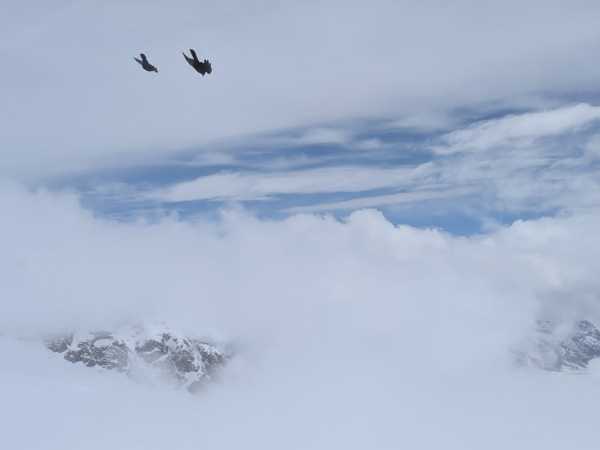 Gathering for a group picture before going back to the warm lab.
Gathering for a group picture before going back to the warm lab.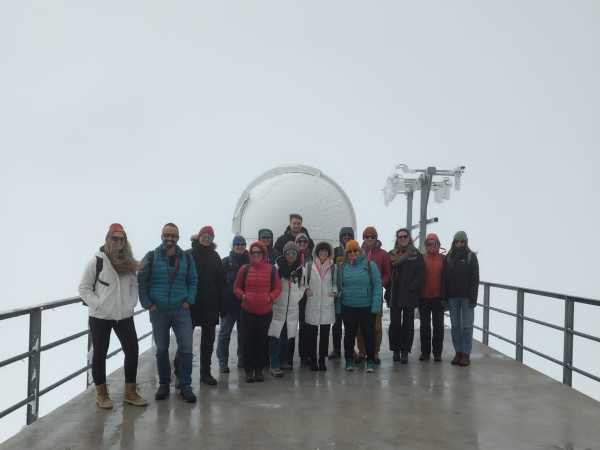 Happy - but tired - faces on the way back down from Jungfraujoch after a day full of interesting insights in the research station.
Happy - but tired - faces on the way back down from Jungfraujoch after a day full of interesting insights in the research station.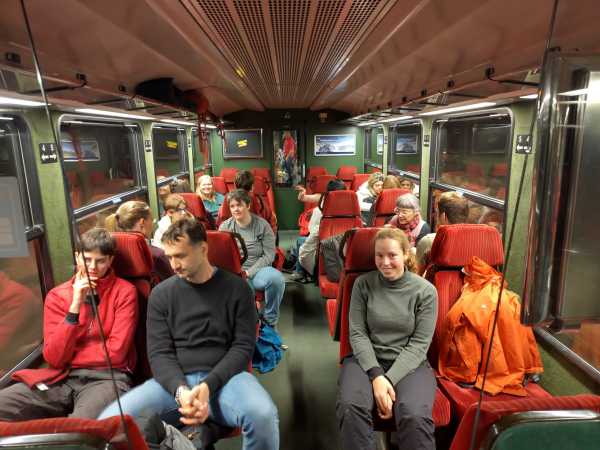
The external page Federal Office for the Environment (FOEN) has submitted the latest external page Swiss greenhouse gas inventory to the external page UNFCCC. The inventory covers the period from 1990 to 2023. Our Swiss FluxNet measurements are explicitly mentioned in the external page report for the first time. We are very happy to see that our research made it into such an important policy relevant document. (5 May 2025)
Our group was well represented at the European Geoscience Union General Assembly external page EGU25. Fabio Turco gave a talk about drivers of N2O fluxes from our cropland site Oensingen, as part of the DONA project. Our visiting PhD student external page Paulina Englert from University of Göttingen presented a poster also on N2O fluxes, with insights from a crop rotation in Germany. Yi Wang gave a talk about the long-term CO2 fluxes from the Chamau grassland, as part of the InsuranceGrass project. Marius Floriancic convened a session on stable isotopes for water and nutrient dynamics in the soil-plant-atmosphere continuum. He also gave a talk on estimating forest-floor litter evaporation with flux data from forest sites Lägeren and Davos. It was a wonderful week to share our research findings, connect with old colleagues and new friends, and enjoy the beautiful weather in Vienna. (27 April – 2 May 2025)
April
What an extraordinary honor! Nina Buchmann has been elected an international member of the National Academy of Sciences of the USA (NAS). In their external page announcement, NAS states that membership is a "recognition of distinguished and continuing achievements in original research". It is further mentioned that "Election to membership in the NAS is a widely accepted mark of excellence in science and considered one of the highest honors that a scientist can receive". We are very excited that Nina was awarded this great honor. Congratulations, Nina! (30 April 2025)
Learning it in the lecture hall is one thing, looking at it on a farm is something else. That's why we take our fourth Bachelor's semester students on excursions twice within the Crop Production course. Together with Achim Walter, external page Andi Lüscher, and external page Sonja Hassold, Anna K. Gilgen led the first excursion to a farm in Wetzikon. On this perfectly sunny day, the students identified grass species in vegetative state, studied field flora, looked at wheat in the crop rotation, and got insights into stand management and the farm. Also for the lecturers, it was a very nice opportunity to exchange with the farmers, but also with each other and to learn something new from another agricultural discipline. A big thank you to the Hug family for their hospitality and time, and to the students for their engagement and interaction. (11 April 2025)
From 7 to 11 April, the students of external page Rämibühl High School in Zurich hosted their annual Fokuswoche Klimakrise – a week dedicated to climate change topics, fully organized by the students. This year’s focus was water. Our doctoral student Sophie Emberger took part in the poster fair to present her research on the hydraulic strategies of urban trees within the UrbaNature project. She shared how city trees manage water stress and joined lively discussions from vertical greening to a future where parking lots are replaced by tiny forests. A personal highlight: being invited into the teacher’s lounge for coffee. Thank you for the warm welcome and great organization – it was a pleasure to be a part of this week. (10 April 2025)
Nina Buchmann was invited to give a seminar at the external page Colloquium in Atmosphere, Climate and Earth Observation of the external page Institute of Geography at University of Bern. In her talk entitled "Terrestrial ecosystem functioning in a changing climate: Fluxes, drivers, feedbacks at multiple scales" Nina shared results from our research within Swiss FluxNet. (2 April 2025)
We warmly welcome Daniela Prando da Silva to our group. Daniela starts her IAESTE internship with us today. She will mainly work in the UrbaNature project, supporting Sophie Emberger’s field sampling campaigns. (1 April 2025)
March
Once a year, the external page ICOS station PIs gather for the ICOS ecosystem monitoring station assembly (MSA) meeting. This year, Iris Feigenwinter went to Madrid to represent external page ICOS-CH and the Davos station. The excursion to external page las Majadas de Tiétar, an ICOS station in the unique Dehesa ecosystem, showcased an amazing workplace for scientists. While the grass is grazed by cattle, the dominant tree species is holm oak (Quercus ilex). Its acorns can be eaten by pigs, resulting in the famous Ibérico ham. At the meeting, attendees discussed CO2 fluxes, sampling and calibration, documentation (BADM), the FLUXNET 2025 initiative, and further ICOS-related topics, ending with a group exercise on ICOS keywords. (22-24 March)
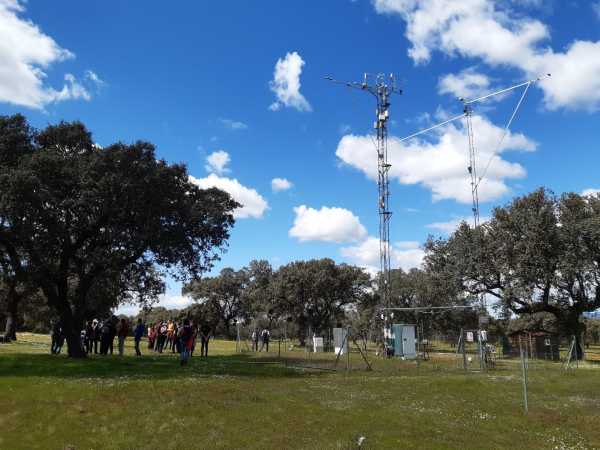 The subcanopy eddy covariance system
The subcanopy eddy covariance system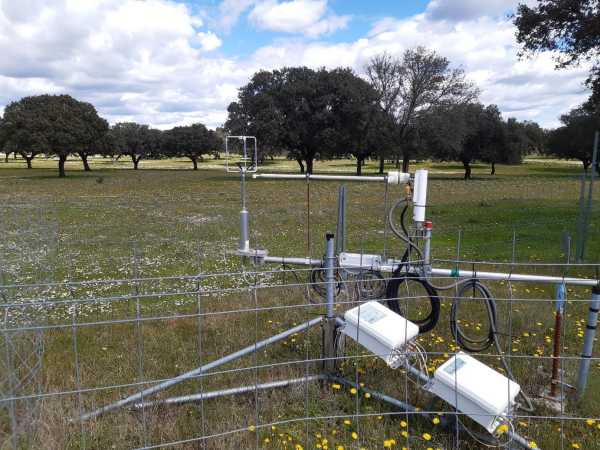 The station received the label of a ICOS Associated Ecosystem Station in 2023
The station received the label of a ICOS Associated Ecosystem Station in 2023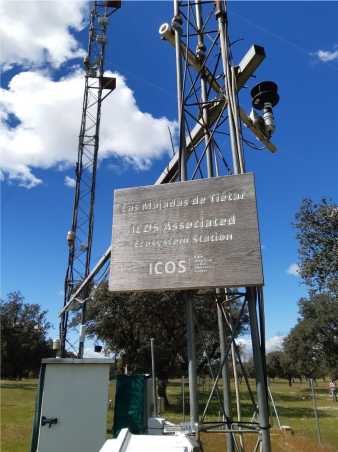 The Monfragüe national park offered amazing views (and vultures)
The Monfragüe national park offered amazing views (and vultures)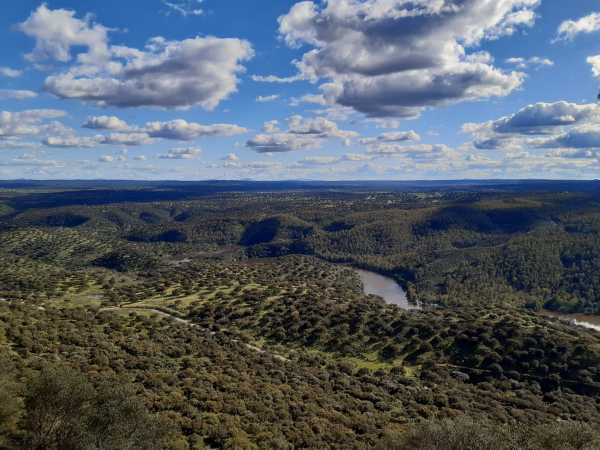 Keywords that best describe ICOS
Keywords that best describe ICOS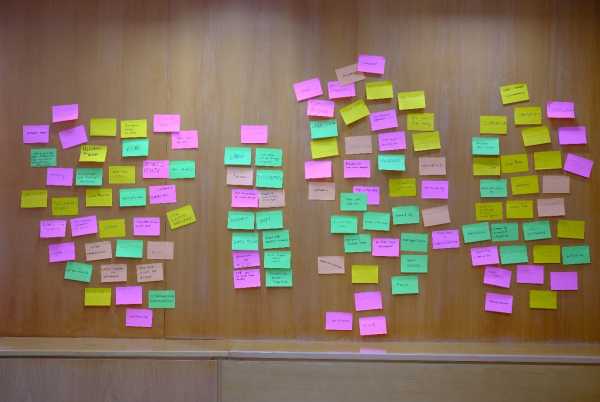 Group picture at the end of the meeting
Group picture at the end of the meeting
Our measurements at Waldlabor on Hönggerberg are highlighted in the current issue of the forestry magazine of the canton of Zurich external page Zürcher Wald. The two-page article explains how our eddy covariance measurements will help estimate how long forest plantations take to turn from a carbon source to a carbon sink. We thank the Waldlabor staff for raising awareness of our research with stakeholders in forestry and the broader public. Read the Download full article (PDF, 8 MB) (in German). (26 March 2025)
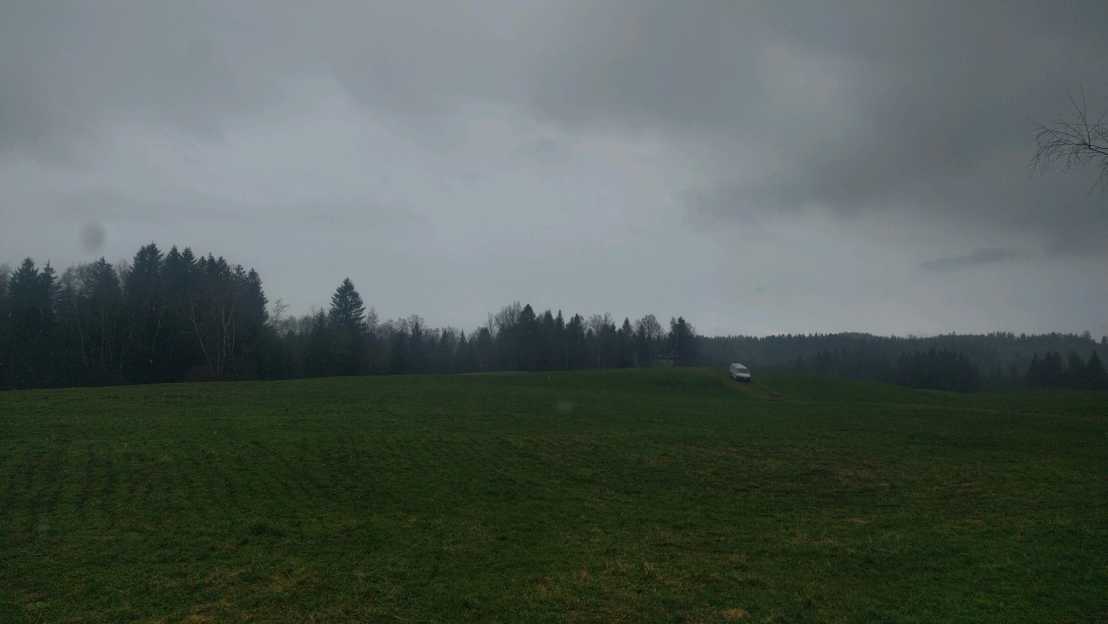
After more than a year of intensive coding and testing by Philip Meier and his colleagues in our technicians' teams, we are proud to announce that Früebüel (CH-FRU) is the first of our field sites acquiring eddy covariance data solely using our new robust eddy covariance data acquisition software rECorD.
The program is coded in Python, built on and a direct succession of Werner Eugster’s well-tried external page sonicreadHS eddy data acquisition software. The basic principle of sonicreadHS has proofed its reliability, sturdiness and quality for over 20 years now. rECorD includes a more sophisticated buffering scheme which reduces data loss due to jitter or irregular data delivery of gas analyzers, also at arbitrary sampling frequencies different from 20 Hz. The design is modular, with rECorD acting as the base and the standalone modules for the gas analyzers being relays to present the analyzer data in standardized form to rECorD on local datagram sockets. This makes our rECorD highly flexible and development for new devices very efficient. rECorD is meant to be run on a Linux host.
We are happy to share the code and instructions which will soon be openly available. In the mean time, contact for information on supported devices and code! (18 March 2025)
ICOS-CH coordinator Susanne Burri and external page HFSJG organized an excursion to the ICOS Class 1 Atmosphere Station Jungfraujoch. Along with Sue, also Iris Feigenwinter, Philip Meier joined the external page ICOS Switzerland the excursion to the highest station in the ICOS network at 3572 m a.s.l! The group was first welcomed by the custodians Sonja Stöckli and Thomas Furter for coffee and tea in the old library and then went on a tour through the research station that was built in 1931, guided by the custodians and external page Prof. Eliza Harris (ICOS PI at University of Bern and new director of the station). They then continued to the Sphinx Laboratories, where ICOS measurements and observations were explained by external page Martin Steinbacher (researcher for ICOS at Empa) and Monika Hager (responsible for the ICOS flask sampler at University of Bern). The custodian Thomas Furter explained his daily work at the station, such as regular cloud observations for external page MeteoSwiss. Greenhouse gas concentrations at Jungfraujoch are external page continously rising and external page air temperature has already risen by 2.1 °C between the pre-industrial period 1871–1900 and now (1994–2023).
The weather and views up on Jungfraujoch were fantastic all day. In the end, there was also the possibility to visit the touristic parts of Jungfraujoch, such as the Ice Palace and the Plateau. On the way back, the group decided that the next ICOS Switzerland excursion should go to the ICOS Class 1 Ecosystem Station Davos! (17 March 2025)
Very proudly installed at the entrance of the research station.
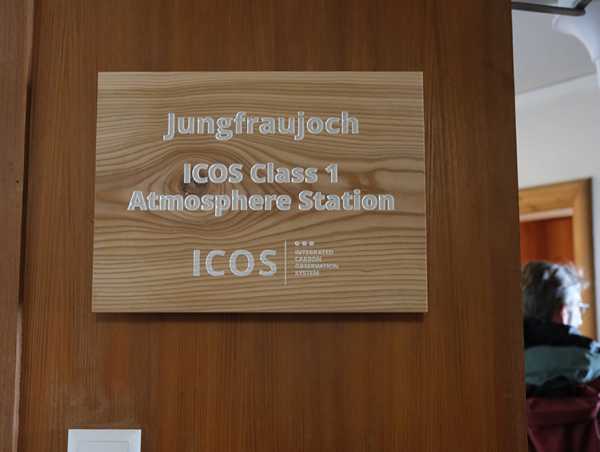 Welcome coffee at the old library of the research station.
Welcome coffee at the old library of the research station. Prof. Eliza Harris (New ICOS-CH PI at University of Bern and new director of the research station) explaining us facts about Jungfraujoch on the terrace of the research station. She gave her first tour of the station – to ICOS Switzerland!
Prof. Eliza Harris (New ICOS-CH PI at University of Bern and new director of the research station) explaining us facts about Jungfraujoch on the terrace of the research station. She gave her first tour of the station – to ICOS Switzerland!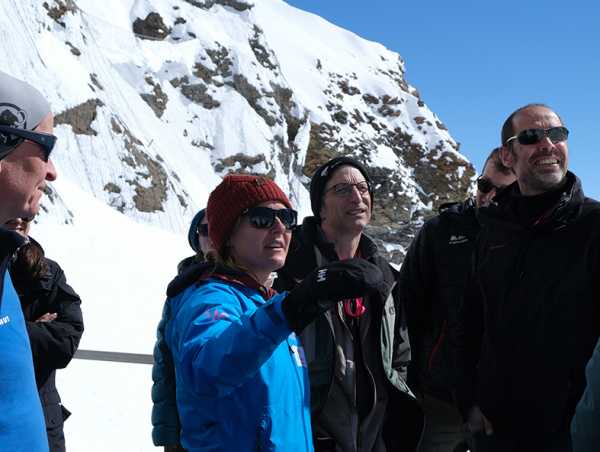
Martin Steinbacher (researcher for ICOS at Empa) explaining the measurements and observation at the Sphinx laboratories.
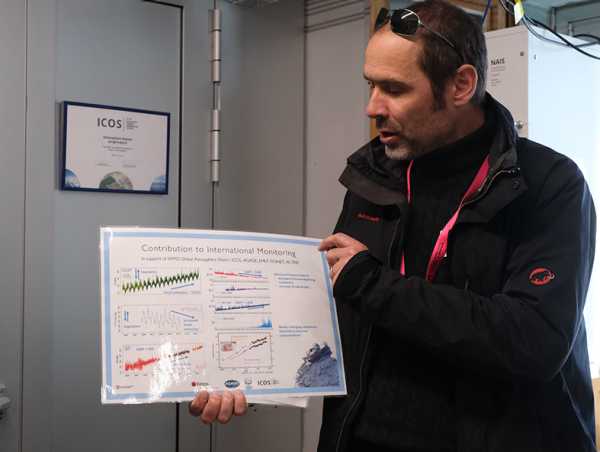 How is it to measure that high up? Exchange between ICOS-CH Ecosystem community and ICOS-CH Atmosphere community.
How is it to measure that high up? Exchange between ICOS-CH Ecosystem community and ICOS-CH Atmosphere community.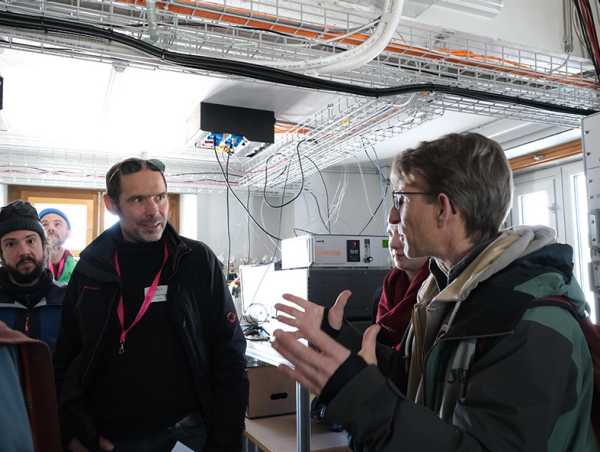 Correctly wired? Philip Meier (technician for the Davos station) carefully studying the famous ICOS flask sampler.
Correctly wired? Philip Meier (technician for the Davos station) carefully studying the famous ICOS flask sampler.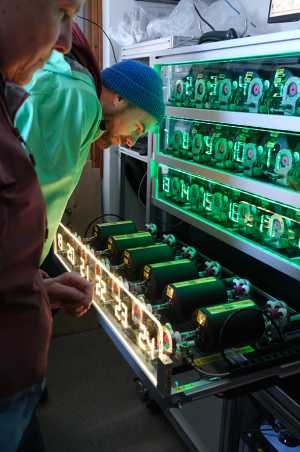 Finally made it! Iris Feigenwinter (ICOS Station PI for Davos) and Susanne Burri (ICOS-CH coordinator) were on the Jungfraujoch for the first time.
Finally made it! Iris Feigenwinter (ICOS Station PI for Davos) and Susanne Burri (ICOS-CH coordinator) were on the Jungfraujoch for the first time. Incredible views over the Aletsch glacier.
Incredible views over the Aletsch glacier.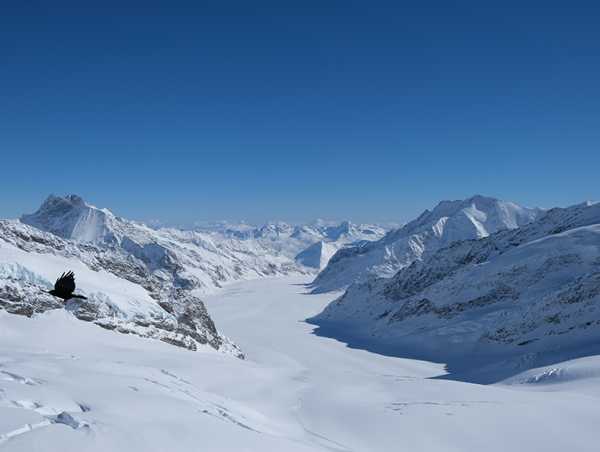 The excursion group together with the custodians at the terrace of the Sphinx.
The excursion group together with the custodians at the terrace of the Sphinx.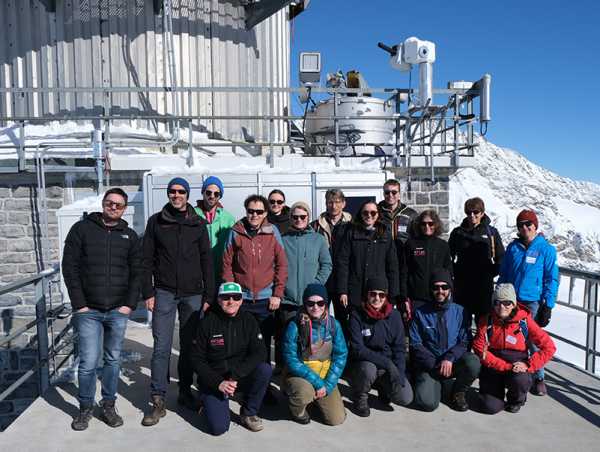
Surrounded by ice in the ice cave. Do not slip, Iris Feigenwinter!
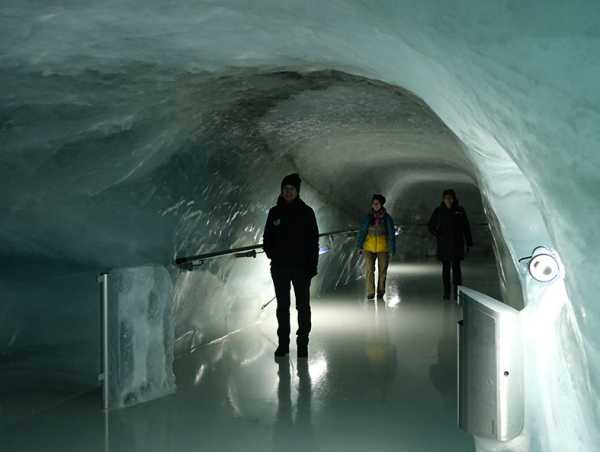
external page Prof. Natascha Kljun from Lund University (Sweden) visited us for a week to work on a paper related to one of our project proposals. To be continued! (17-21 March 2025)
Inauguration lecture and party ? We are coming! external page Prof. Valentin Klaus, former member of the group and now professor at the Ruhr University Bochum, gave an extra inauguration talk for friends and family and we all came ... Thanks so much! We enjoyed the talk, the party, and the visit to Bochum. (15 March 2025)
Members of the InsuranceGrass project had their final in-person project meeting in Zurich. They updated each other on the progress of each work package, made plans to conclude the project this year, and shared reflections and feedback on the project. They also exchanged findings with one of their industry partners, external page Schweizer Hagel, and visited the community-supported agricultural farm external page Huebhof. (13/14 March 2025)
Welcome to external page Paulina Englert from University of Göttingen who will stay with us as an exchange doctoral student for the next three months. We are looking forward to a great exchange on greenhouse gas fluxes of agricultural sites. (3 March 2025)
February
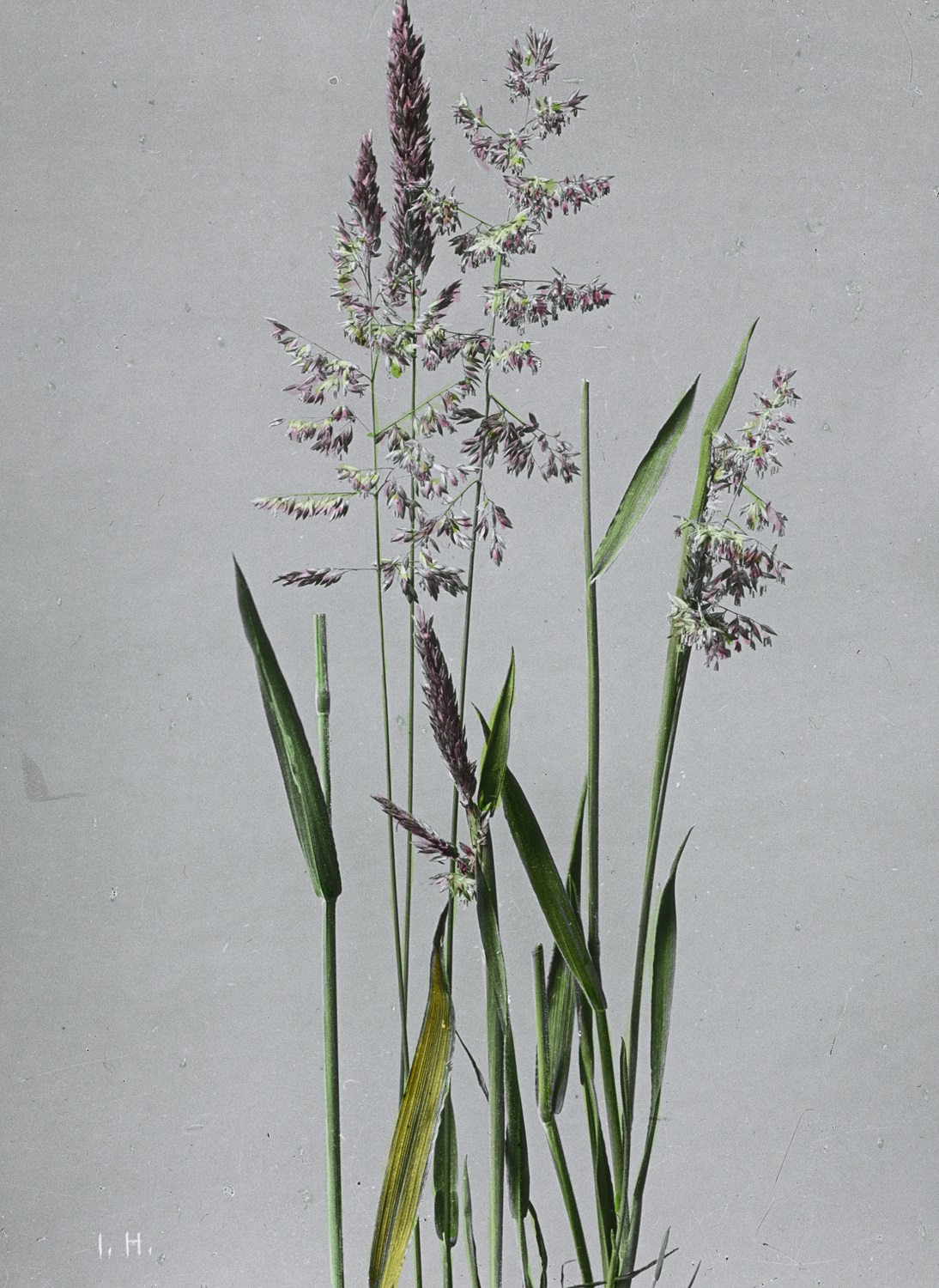
Remember the hand-colored glass slides we once found in one of our cupboards? In the meantime, they have not only been put together in the book "external page Fundamentals – die Pflanzenwelt des «I.H.»: Aktualität einer Sammlung handkolorierter Glasdiapositive" by Christiane Jacquat, but they are now also openly available in the E-Pics collection of the ETH library. The pictures never cease to amaze with their attention to detail and artistic finesse. Check out the slides, you'll be fascinated as well. (28 February 2025)
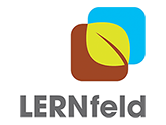
The annual LERNfeld young researchers course took place again. Master's students from different disciplines were introduced to the LERNfeld environmental education project and were able to get their hands dirty in determining earthworm ecotypes. In the frame of LERNFeld, Master's students visit school classes, provide tutorials on methods, introduce how to collect data, and help school students to understand the science behind the data. In turn, the early-career scientists benefit from these interactions by gaining educational and outreach experiences. The course was led by Sabina Keller and held with lecturers from partner organizations in spring-like weather. (27 February 2025)
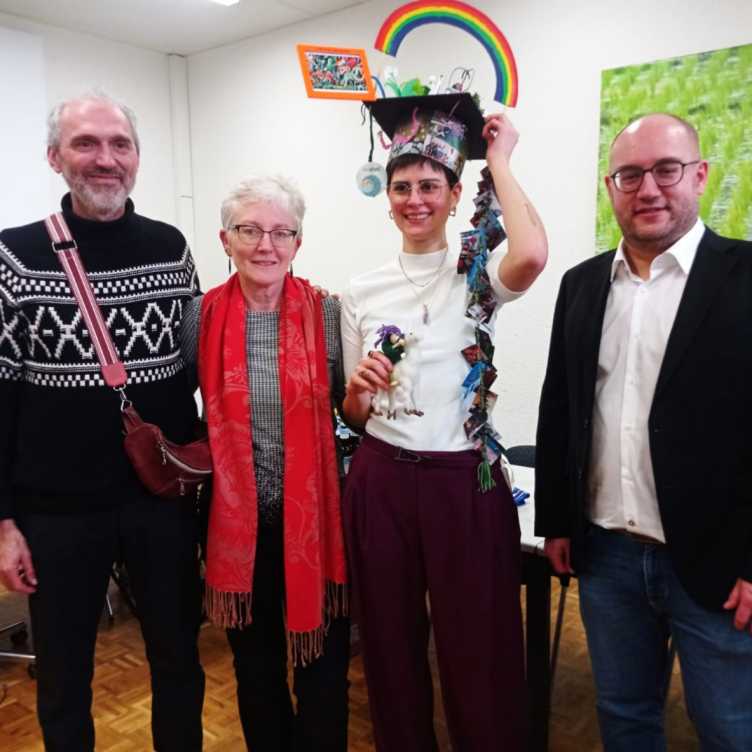
Congrats to Lilli (Liliana) Scapucci who successfully defended her doctoral thesis today!!! Great talk and excellent answers to the questions of the internal and external reviewers. (21 February 2025)
Lorenz Allemann visited Colombia, the country of salsa, pandebono, café and corrientazo, for a second research stay. In 2022, he carried out his MSc thesis in the Colombian Amazon and now returned to visit the external page Centro Internacional de Agricultura Tropical CIAT in Palmira. Lorenz gave a seminar about drivers of nitrous oxide fluxes in grassland, intensified the connection to the Tropical Forages group and was given an overview of the institute and current projects. Muchas gracias por la hospitalidad! Sin duda volveré - external page Colombia tierra querida. (27 January-7 February 2025)
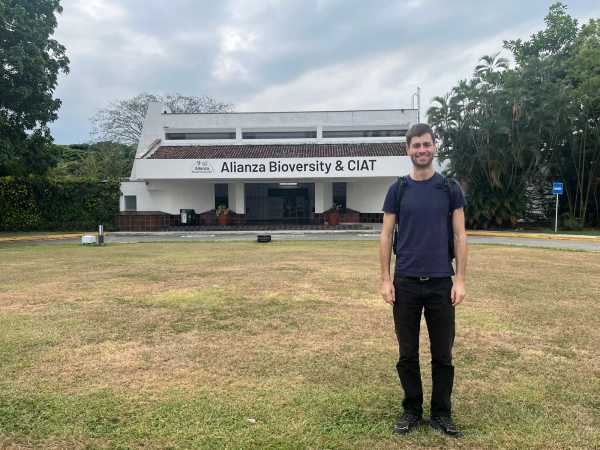 Invitation to the seminar...
Invitation to the seminar...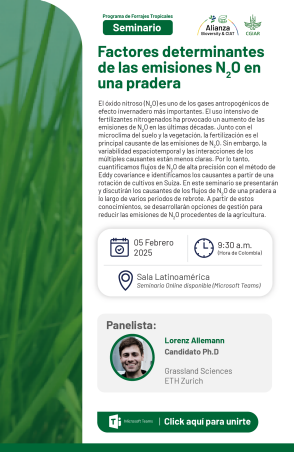 ... given to the group of Tropical Forages.
... given to the group of Tropical Forages.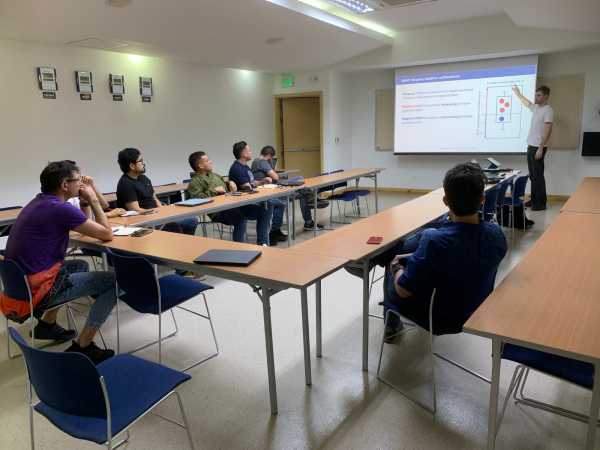 CIAT is not only a research institute but also hosts the world's largest gene bank of beans, cassava, and tropical forages from all over the world.
CIAT is not only a research institute but also hosts the world's largest gene bank of beans, cassava, and tropical forages from all over the world.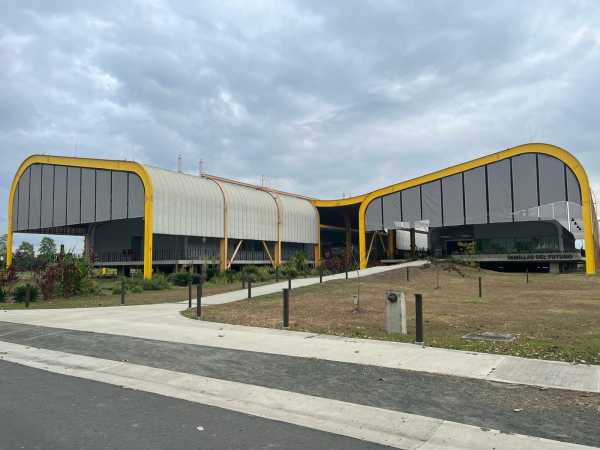 Most of the seeds are stored in the freezer but some are also kept as living organisms
Most of the seeds are stored in the freezer but some are also kept as living organisms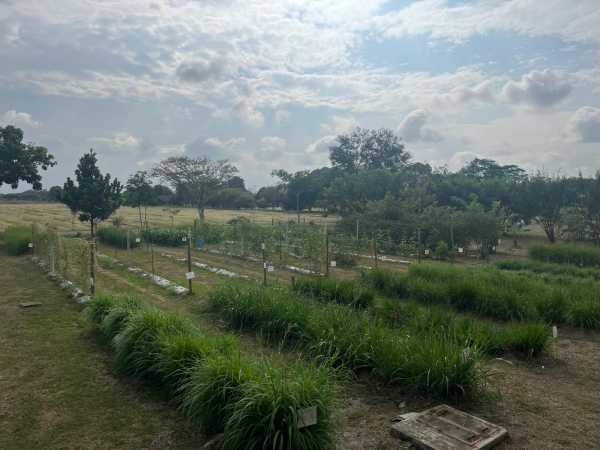 Lorenz and Mauricio Sotelo from the Tropical Forages group
Lorenz and Mauricio Sotelo from the Tropical Forages group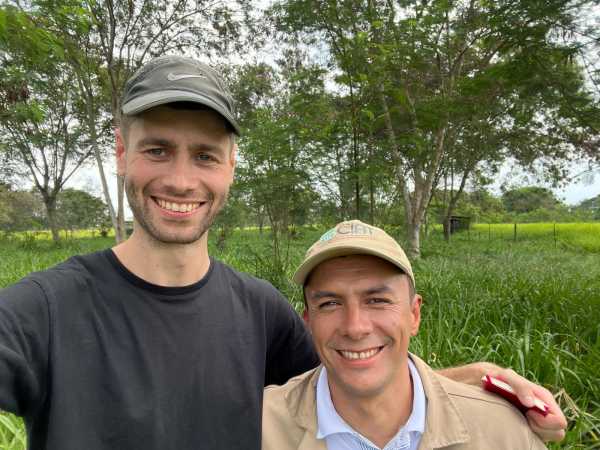
Fieldwork in winter can be challenging but is also a good opportunity to escape the cloudy conditions in Zurich. Marius Floriancic, Iris Feigenwinter, and two Master's students went to our external page ICOS-CH and Swiss FluxNet site in Davos to take snow samples. The Master’s project is part of the new EU Horizon Project CryoSCOPE and aims to estimate sublimation using stable water isotope analyses and eddy covariance water vapor fluxes from our flux towers. In the afternoon, we also stopped by Marius’ discharge station in the Dischma valley to collect water samples from the Dischmabach. Overall, it was a very nice and sunny day in the field, including some short interactions with skiers that were passing by on the slopes next to our stations. (4 February 2025)
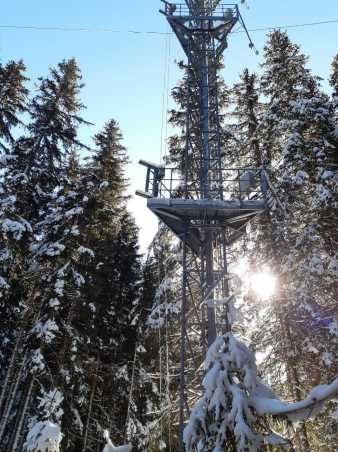 Even under these challenging conditions, the automatic greenhouse gas flux chambers are still working
Even under these challenging conditions, the automatic greenhouse gas flux chambers are still working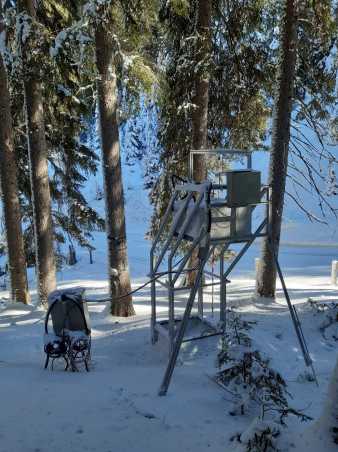 Where is the best sampling location?
Where is the best sampling location?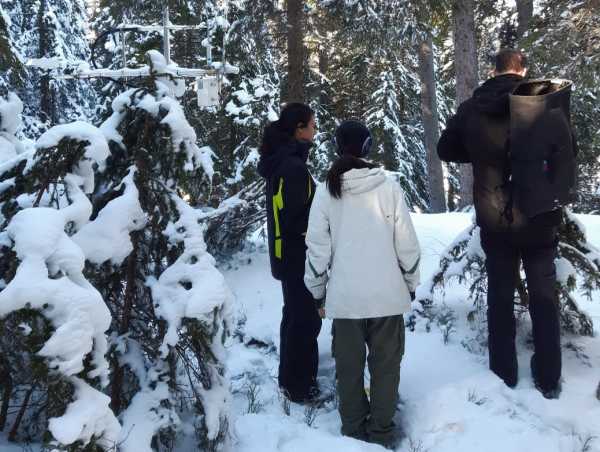 Taking a snow sample
Taking a snow sample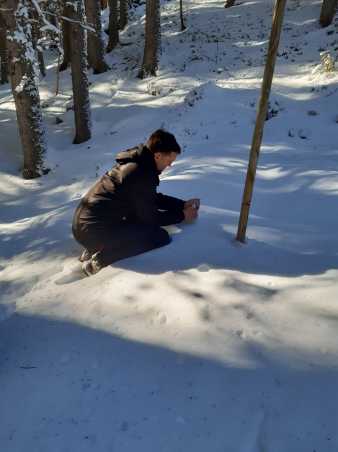 The sun was already gone in the Dischma valley
The sun was already gone in the Dischma valley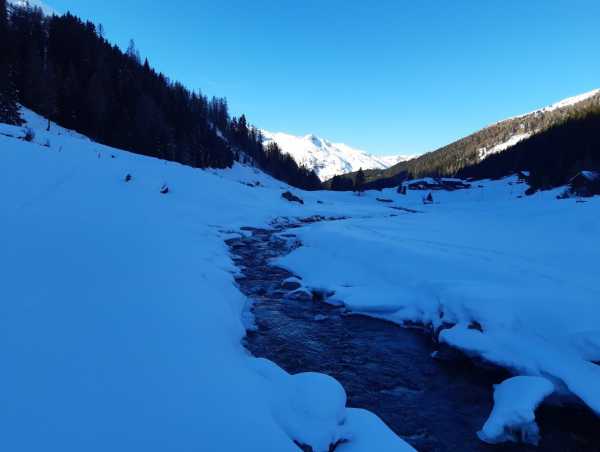 End of the fieldwork day at the Dischmabach with the water sampler in the background
End of the fieldwork day at the Dischmabach with the water sampler in the background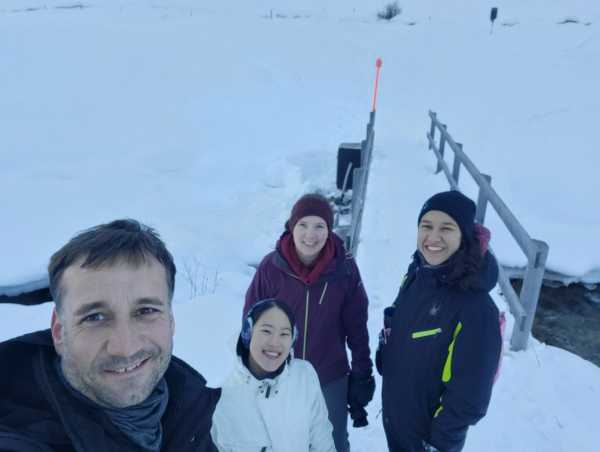
Each year in January, we submit the "AAA", ETH's Annual Academic Achievement report. And here are the achievements of our group from the past year 2024:
- 355 students taught in 652 semester hours during 2024,
- 292 grades given in 2024,
- 1 Bachelor's and 2 Master's theses finished in 2024,
- 10 active doctoral students (by the end of the year),
- a large number of publications ... 42, many written with colleagues from all over the globe.
86% of our papers have been published in open access journals (Gold OA) or are open access (Hybrid OA). To increase the open access, we also uploaded postprints to the ETH Research Collection (Green OA). The result: 94% of our journal publications from 2024 are openly available to everybody.
Thanks to a great team!!
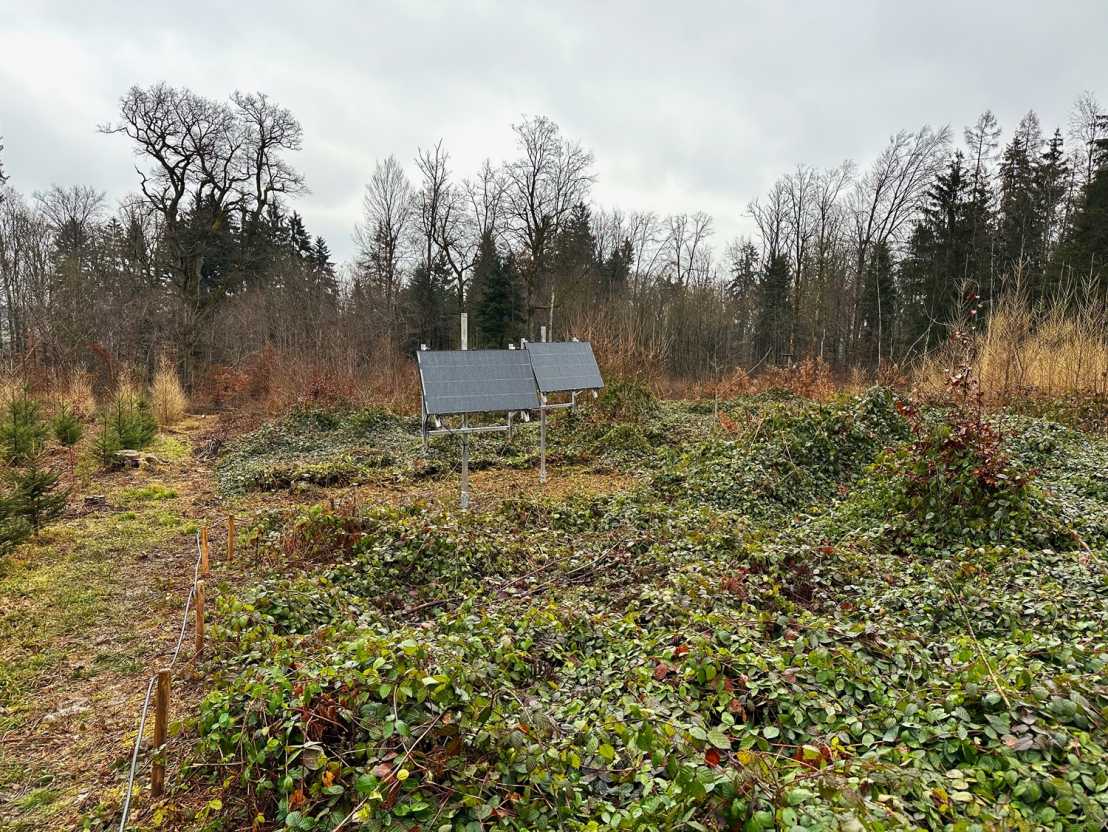
Continuous eddy covariance measurements require a reliable power supply. To enable smooth data recording and storage at our station at Hönggerberg, our technicians placed two new solar panels at the site. And what a difference that made! Even in the current cloudy conditions, the new panels deliver enough power to support our measurements. (29 January 2025)
In a short article in the farmer's newspaper die grüne, Nina Buchmann shares our findings on N2O emissions from grassland and cropland and concludes that management must support plants to win the competition for soil nitrogen against the microorganisms. The article is complemented with a comment by Hans Frei, former Vice President of the Swiss Farmer's Union. Find out more in the external page article. (20 January 2025)
Our Master course on Stable Isotope Ecology took place again this week. The students attended lectures in the morning and worked on their practical projects in the afternoon. Great success! (10-17 January 2025)
Our flux data are - again - in high demand, the interest in such kind of ecosystem measurements is ever increasing. Lukas Hörtnagl, our data scientist, has been collecting download numbers for our datasets since 2015. In 2024 alone, datasets from our six long-term Swiss FluxNet sites were downloaded a record-high 8477 times, which is an increase of almost 30% compared to 2023 and the highest number of downloads since we started sharing the data. Most downloads were recorded for the ICOS Class 1 station Davos, followed by Oensingen and Chamau. In total, we share 129 site-years of data. With the recent announcement of the external page FLUXNET Data System Initiative, which will be fully operational by December 2025, we expect the interest in our data to furhter increase. (6 January 2025)
A warm welcome to Flora Zourek who joins our group as a doctoral student today! Flora will work in the EYE-CLIMA project. (6 January 2025)
Happy New Year! The Grassland Sciences group wishes you the very best for 2025! We are looking forward to another year of great teamwork, inspiring collaborations, bringing science, education, and outreach further together, and meeting many colleagues, students, school kids, and the public. Find out about our 2024 activities in our News Archive. (1 January 2025)




